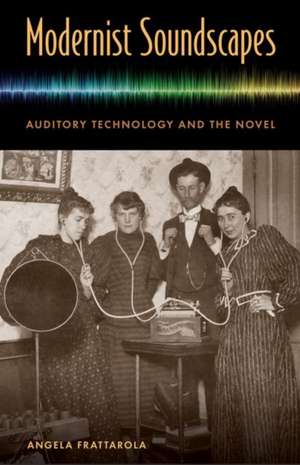Modernist Soundscapes
Autor Angela Frattarolaen Limba Engleză Hardback – 30 dec 2018
Preț: 493.95 lei
Preț vechi: 641.50 lei
-23% Nou
Puncte Express: 741
Preț estimativ în valută:
94.58€ • 98.48$ • 78.47£
94.58€ • 98.48$ • 78.47£
Carte tipărită la comandă
Livrare economică 13-27 februarie
Preluare comenzi: 021 569.72.76
Specificații
ISBN-13: 9780813056074
ISBN-10: 0813056071
Pagini: 208
Dimensiuni: 152 x 229 x 16 mm
Greutate: 0.47 kg
Editura: University Press of Florida
ISBN-10: 0813056071
Pagini: 208
Dimensiuni: 152 x 229 x 16 mm
Greutate: 0.47 kg
Editura: University Press of Florida
Descriere
This study questions how early twentieth-century auditory technologies altered sound perception, and how these developments shaped the modernist novel. Without polarizing vision and audition, this book reveals how modernists tend to use auditory perception to connect characters, shifting the subject from a distanced, judgmental observer to a reverberating body, attuned to the moment.
